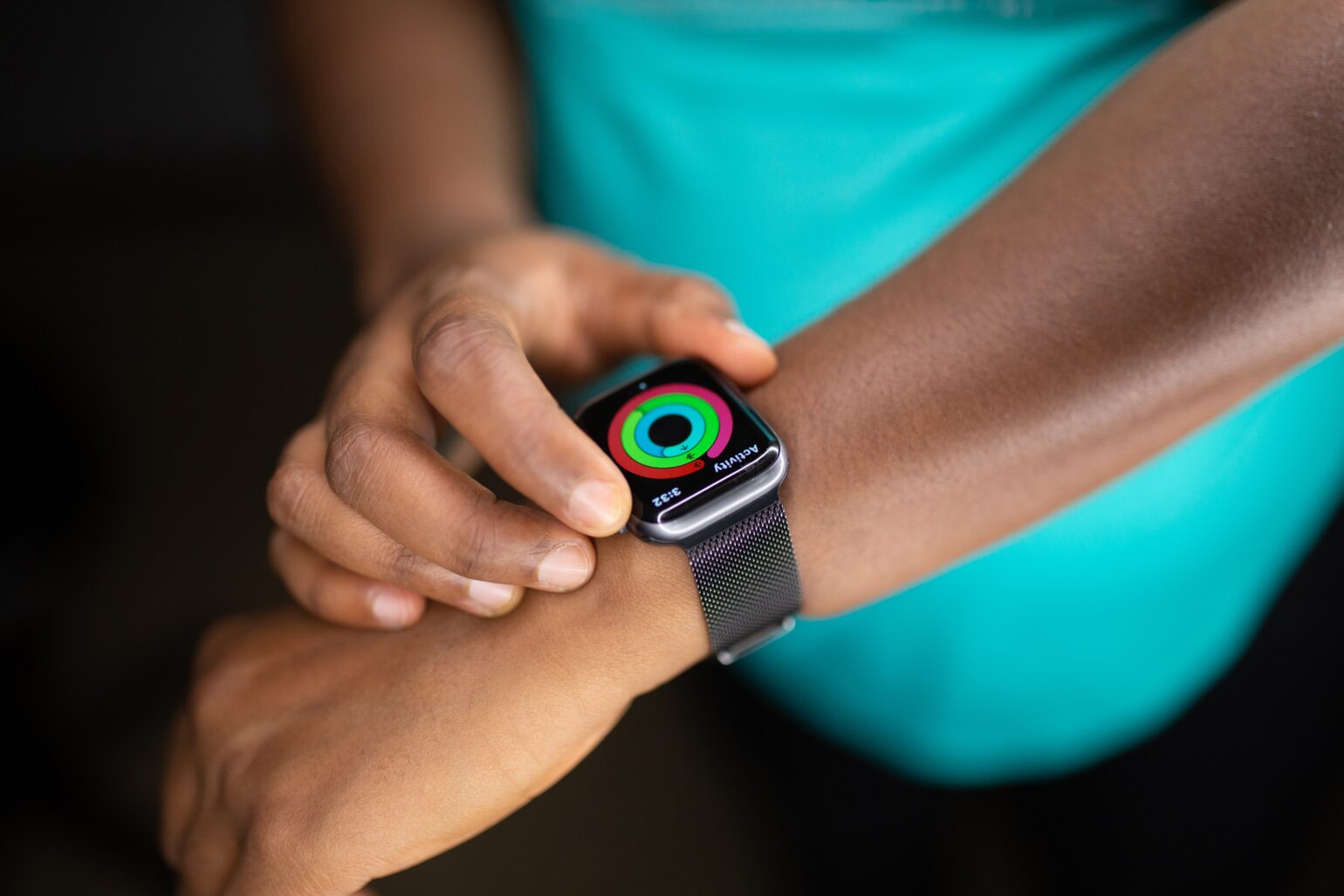At any given moment, those of us with certain watches and other wearables can get a sense of our heart rate, sleep patterns, daily calorie expenditure, step total and a host of other data points.
This information paints a detailed and colorful picture of our overall fitness — an ever-changing snapshot that offers real-time perspective on our overall health. It also paints a picture of the current state of the health care industry, where a deluge of data is giving doctors and patients alike more information than ever before.
In a 2020 report, Stanford University School of Medicine christened the current era the “Rise of the Data-Driven Physician.” It just so happens that the Bay Area and Marin County are at the center of some of these developments.
Researchers at Novato’s Buck Institute recently have teamed up with Seattle-based Phenome Health to create the Center for Phenomic Health with the goals to leverage data and help people live better, longer, and healthier. In San Francisco, Clarify Health, a software analytics company, is delivering end-to-end intelligence on every patient journey, empowering payers, providers and life sciences companies to make more proactive care decisions based on de-identified patient data.
Todd Gottula, co-founder and president of Clarify Health, said using data to inform medical decisions that can maximize wellness and minimize sickness is the way of the future.
“It benefits health systems when people are healthier,” he said. “The more [health care organizations] can use data to keep people at their best and help people avoid sickness and other debilitating conditions, the better off all of us will be.”

Photo: Courtesy of Solen Feyissa via Unsplash
Rise of data
No discussion about the present and future of data-driven health care can begin without at least a cursory look at how we got here.
Readers over the age of 30 might remember a time when medical records were all paper-based; in the “olden days” of the late 1980s and the early 1990s, each American had a literal file that contained their health care information. This file followed patients from provider to provider. In the event of out-of-network emergencies, pertinent information was transmitted by phone or fax as necessary.
Everything changed as the nation approached the year 2000. The Health Insurance Portability and Accountability Act (HIPAA) of 1996 required the creation of national standards to protect sensitive patient health information from being disclosed.
Pretty much every health care provider has been focused on digitizing information since then.
The biggest representation of this has been the rise of Electronic Health Records (EHRs). Depending on the patient, this data can span the gamut from basic information about blood pressure, vaccinations, and allergies and mental health diagnoses to more comprehensive information about disease histories, neurotypes and even genetics.
Other digital clinical information today includes terabytes upon terabytes of administrative data, claims data, patient/disease registries, health surveys and clinical trials data.
As more and more healthcare organizations in California embrace digital records, the push is to make the approach more universal. According to a recent state analysis, the proportion of medical and social services organizations that currently use digital records and share that information with other providers varies widely based on sector and location.
For instance, while 97 percent of family physicians used electronic record-keeping methods in 2020, those who didn’t tended to be small independent practices in rural areas. Likewise, 90 percent of medium and large hospitals also used electronic-only patient records, but only 70 percent of small hospitals in the state used them. Finally, less than half of nursing homes use electronic records and only 10 percent reported that their systems connected with local hospitals.
Following the Covid-19 pandemic, the California Health and Human Services (CalHHS) Single Data Sharing Agreement (DSA) passed in 2022 requires healthcare providers to sign a statewide data-sharing agreement. John Ohanian, chief data officer for the HHS agency, said that if implementation goes as planned, a doctor or case worker could request a patient’s full medical and social services history in real-time.
“Our goal was to make it mandatory that people exchange information and provide rules of the road and guidelines so it can be done well,” Ohanian told Cal Matters. “People need to have this information in their hands.”

Photo: Courtesy of the National Cancer Institute via Unsplash
A different approach
Some organizations have gotten out in front of this mandate.
At the Buck, the new Center for Phenomic Health aims to leverage data to make healthcare more proactive, tracking patients’ wellness to avoid illness and debilitating conditions from the beginning. Dr. Lee Hood will run the new center, and said he will apply lessons from his previous work in using data to track certain aspects of wellness to come up with a person’s biological age (as opposed to a person’s chronological age).
In this previous research, Dr. Hood and colleagues discovered that if they could get people to follow targeted and personalized wellness routines, they essentially could extend people’s lives.
The new initiative at the Buck will track genomic data — that is, details about a person’s cellular makeup—as well as information about the person’s “longitudinal phenome,” which comprises physical characteristics such as blood measurements, data on the contents of a person’s gut microbiome, and a series of functional organ scans.
The new Buck initiative also will leverage cognitive tests and neuropsychological metrics to assess a person’s brain health, which Dr. Hood said many contemporary health systems simply aren’t studying proactively at this point.
“You have to exercise your brain just as you exercise your heart,” he said. “This is a critical area of healthcare that can have a huge impact on a person’s overall wellness.”
Kaiser Permanente, which has medical centers in Marin County and all over the Bay Area, also is leveraging data to take a more proactive approach. The company’s marketing slogan, “Thrive,” says it all; at a time when so much of the healthcare system is designed to respond to illness once it has been identified, Kaiser is making a concerted effort to keep patients healthier in the first place.
According to Dr. Kristine Lee, associate executive director of virtual medicine and technology, this plays out in several different areas. For starters, patient preferences can be documented via the online portal or at the point of care and can be shared across the entire care delivery system.
Patients and doctors alike can also easily update preferences at any time.
“A complete view of the patient’s medical conditions, medications, surgical and medical history afford us to provide highly targeted care and help to identify care gaps and opportunities for preventive care,” said Dr. Lee, whose office is in San Francisco. “Our integrated ecosystem with an integrated electronic medical record allows for a level of personalized care that other care delivery systems struggle to achieve.”
Then, of course, there’s Clarify Health. Since it was founded in 2015, the company has amassed data on more than 300 million Americans, and it leverages this data in several ways. First, Clarify helps health systems direct patients to the next node of their respective medical journeys in more informed ways. Second, the company uses data to put patients into certain cohorts or archetypes and predict what treatments they might need next.
As Gottula explained it, both applications enable health systems to deliver more targeted care and simultaneously be smarter about how they spend money.
“If our data suggests that someone is a candidate for outpatient surgery, we know that will be easier on the person and save the medical system about $5,000, so it’s a win for everyone,” he said. “At the same time, if our data indicates that someone fits a profile of an archetype and the same data shows that a certain percent of people in that archetype need a particular procedure down the road, we can recommend preventative services and potentially avoid having to respond further.”
Gottula continued: “The premise is simple: avoidance of an event is actually as lucrative if not more lucrative than the activity itself. Data makes this all possible.”

Photo: Courtesy of Alexander Sinn via Unsplash
What’s next
Data will continue to drive healthcare innovation both here in Marin and across the country.
One obvious goal for the future in California is to lean into the CalHHS DSA of 2022 and eventually have all healthcare institutions get up to speed on both sharing and contributing to EHRs and other forms of data.
Another goal is to keep up with Moore’s Law, which suggests that computer processing speed doubles every two years. The more data providers can calculate, the faster computers can process that data, the more likely it is that the entire landscape of healthcare in this country will become informed by incorporating personal details. With the rise of machine learning and artificial intelligence (AI), it stands to reason that healthcare systems will begin using systems that incorporate (and potentially act on) this data automatically, too.
Laura Higgins, technical engineer with JMP, a San Francisco-based company that makes software to process data, said machine learning and subsequent technological improvements won’t replace doctors but instead equip them to make more informed decisions that prioritize wellness and value for the healthcare system overall.
“We’ll see more analytics, not less,” she said, “and that’s a good thing for everyone.”
Of course, more informed decision-making could lead to another revolution in healthcare — one that sees the system switch from the expensive whack-a-mole game of treating ailments as they arise to an approach that incentivizes staying healthy from the very beginning.
At the Buck, researchers refer to this as “healthspan” instead of “lifespan,” since the goal is to extend the amount of time people spend healthy.
To be fair, the economics of transitioning to this model from a model that has seen the highest premiums in history may be difficult in the short-term. Still, Dr. Hood said the benefits are self-evident for just about everyone involved.
“We estimate that most adults are at about 20 or 30 percent of their potential wellness right now,” said Dr. Hood. “The long-term vision here is that we use data to catalyze a paradigm change where healthcare focuses on wellness and prevention rather than disease care, and everybody lives healthier lives as a result.”
Matt Villano is a writer and editor based in Healdsburg. Learn more about him at whalehead.com.


